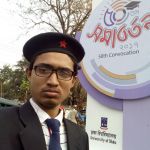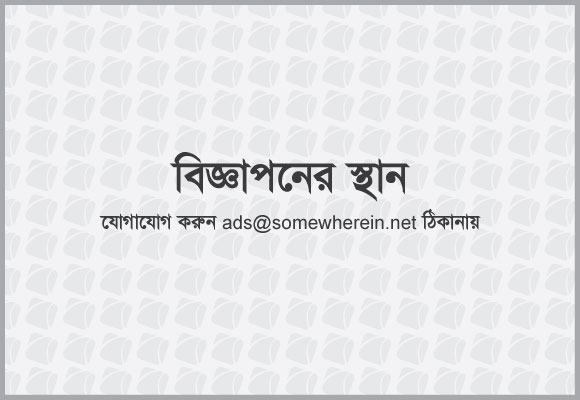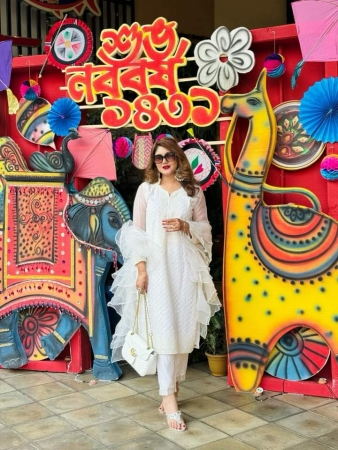দ্বিতীয় অংশঃ
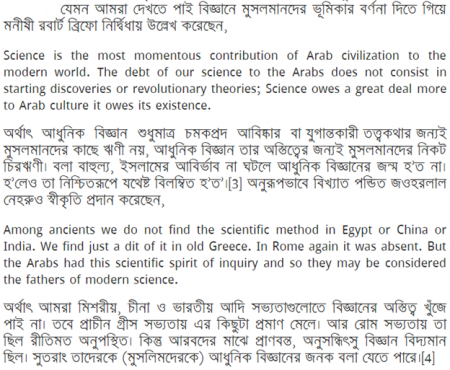
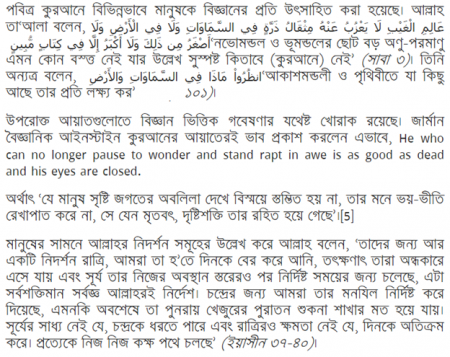
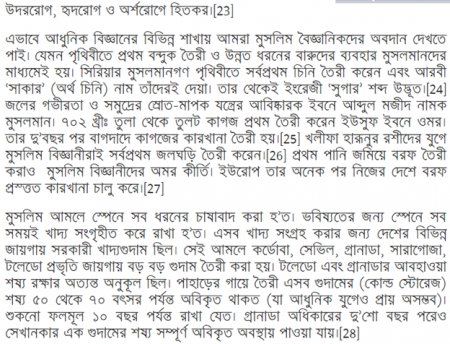
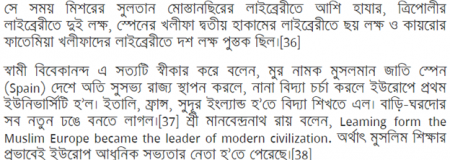
Polymaths:
Another common feature during the Islamic Golden Age was the large number of Muslim polymath scholars, who were known as “Hakeems”, each of whom contributed to a variety of different fields of both religious and secular learning, comparable to the later “Renaissance Men” (such as Leonardo da Vinci) of the European Renaissance period. During the Islamic Golden Age, polymath scholars with a wide breadth of knowledge in different fields were more common than scholars who specialized in any single field of learning.
Notable medieval Muslim polymaths included al-Biruni, al-Jahiz, al-Kindi, Ibn Sina (Latinized: Avicenna), al-Idrisi, Ibn Bajjah, Ibn Zuhr, Ibn Tufail, Ibn Rushd (Latinized: Averroes), al-Suyuti, Jābir ibn Hayyān, Abbas Ibn Firnas, Ibn al-Haytham (Latinized: Alhazen or Alhacen), Ibn al-Nafis, Ibn Khaldun, al-Khwarizmi, al-Masudi, al-Muqaddasi, and Nasīr al-Dīn al-Tūsī.
Economy:
The Islamic Empire significantly contributed to globalization during the Islamic Golden Age, when the knowledge, trade and economies from many previously isolated regions and civilizations began integrating through contacts with Muslim (and Jewish Radhanite) explorers and traders. Their trade networks extended from the Atlantic Ocean and Mediterranean Sea in the west to the Indian Ocean and China Sea in the east. These trade networks helped establish the Islamic Empire as the world’s leading extensive economic power throughout the 7th–13th centuries.
Market Economy:
Early forms of proto-capitalism and free markets were present in the empire time where an early market economy and early form of merchant capitalism was developed between the 8th–12th centuries, which some refer to as “Islamic capitalism”. A vigorous monetary economy was created on the basis of a widely circulated common currency (the dinar) and the integration of monetary areas that were previously independent. Business techniques and forms of business organisation employed during this time included early contracts, bills of exchange, long-distance international trade, early forms of partnership (mufawada) such as limited partnerships (mudaraba), and early forms of credit, debt, profit, loss, capital (al-mal), capital accumulation (nama al-mal), circulating capital, capital expenditure, revenue, cheques, promissory notes, trusts (waqf), savings accounts, transactional accounts, pawning, loaning, exchange rates, bankers, money changers, ledgers, deposits, assignments, the double-entry bookkeeping system, and lawsuits. Organizational enterprises independent from the state also existed in the medieval Islamic world. Many of these early proto-capitalist concepts were further advanced in medieval Europe from the 13th century onwards.
Industrial growth:
Hydropower, tidal power, and wind power were used to power mills and factories. Limited use was also made of fossil fuels such as petroleum. The industrial use of watermills in the Islamic world dates back to the 7th century, while horizontal-wheeled and vertical-wheeled water mills were both in widespread use since at least the 9th century. A variety of industrial mills were being employed in the Islamic world, including early fulling mills, gristmills, hullers, sawmills, shipmills, stamp mills, steel mills sugar mills, tide mills and windmills.
By the 11th century, mills operated throughout the Islamic world, from Spain (al-Andalus) and North Africa to the Middle East and Central Asia. Muslim engineers also inventedcrankshafts and water turbines, employed gears in mills and water-raising machines, and pioneered the use of dams as sources of water power, used to provide additional power to watermills and water-raising machines. Such advances made it possible for many industrial tasks that were previously driven by manual labour in ancient times to be mechanized and driven by machinery instead in the medieval Islamic world. The transfer of these technologies to medieval Europe had an influence on the Industrial
Revolution:
Established industries active during this period included astronomical instruments, ceramics, chemicals, distillation technologies, clocks, glass, mechanical hydropowered and wind powered machinery, matting, mosaics, pulp and paper, perfumery, petroleum, pharmaceuticals, rope-making, shipping, shipbuilding, silk, sugar, textiles, water, weapons, and the miningof minerals such as sulphur, ammonia, lead and iron. Knowledge of these industries were later transmitted to medieval Europe, especially during the Latin translations of the 12th century. For example, the first glass factories in Europe were founded in the 11th century by Egyptian craftsmen in Greece. The agricultural and handicraft industries also grew during this period.
Technology:
A significant number of inventions were produced by medieval Muslim engineers and inventors, such as Abbas Ibn Firnas, the Banū Mūsā, Taqi al-Din, and most notably al-Jazari.
Some of the inventions journalist Paul Vallely has stated to have come from the Islamic Golden Age include the camera obscura, coffee, soap bar, tooth paste, shampoo, distilledalcohol, uric acid, nitric acid, alembic, valve, reciprocating suction piston pump, mechanized waterclocks, quilting, surgical catgut, vertical-axle windmill, inoculation, cryptanalysis,frequency analysis, three-course meal, stained glass and quartz glass, Persian carpet, and celestial globe.
Urbanization:
The city of Baghdad was the capital of the Abbasid Leaders and a major center of learning and trade in the world. As urbanization increased, Muslim cities grew unregulated, resulting in narrow winding city streets and neighbourhoods separated by different ethnic backgrounds and religious affiliations. Suburbs lay just outside the walled city, from wealthy residential communities, to working class semi-slums. City garbage dumps were located far from the city, as were clearly defined cemeteries which were often homes for criminals. A place of prayer was found just near one of the main gates, for religious festivals and public executions. Similarly, military training grounds were found near a main gate.
Muslim cities also had advanced domestic water systems with sewers, public baths, drinking fountains, piped drinking water supplies, and widespread private and public toilet and bathing facilities. The demographics of medieval Islamic society varied in some significant aspects from other agricultural societies, including a decline in birth rates as well as a change in life expectancy. Other traditional agrarian societies are estimated to have had an average life expectancy of 20 to 25 years, while ancient Rome and medieval Europe are estimated at 20 to 30 years. Conrad I. Lawrence estimates the average lifespan in the early Islamic Caliphate to be above 35 years for the general population, and several studies on the life spans of Islamic scholars concluded that members of this occupational group had a life expectancy between 69 and 75 years, though this longevity was not representative of the general population.
The early Islamic Empire also had the highest literacy rates among pre-modern societies, alongside the city of classical Athens in the 4th century BC, and later, China after the introduction of printing from the 10th century. One factor for the relatively high literacy rates in the early Islamic Empire was its parent-driven educational marketplace, as the state did not systematically subsidize educational services until the introduction of state funding under Nizam al-Mulk in the 11th century. Another factor was the diffusion of paper from China, which led to an efflorescence of books and written culture in Islamic society, thus papermaking technology transformed Islamic society (and later, the rest of Afro-Eurasia) from an oralto scribal culture, comparable to the later shifts from scribal to typographic culture, and from typographic culture to the Internet. Other factors include the widespread use of paperbooks in Islamic society (more so than any other previously existing society), the study and memorization of the Qur’an, flourishing commercial activity, and the emergence of theMaktab and Madrasah educational institutions.
Science:
Early scientific methods were developed in the Islamic world, where significant progress in methodology was made, especially in the works of Ibn al-Haytham (Alhazen) in the 11th century, who is considered a pioneer of experimental physics, which some place in the experimental tradition of Ptolemy. Others see his use of experimentation and quantification to distinguish between competing scientific theories as an innovation in scientific method. Ibn al-Haytham (Alhazen) wrote the Book of Optics, in which he significantly reformed the field of optics, empirically proved that vision occurred because of light rays entering the eye, and invented the camera obscura to demonstrate the physical nature of light rays.
Ibn al-Haytham has also been described as the “first scientist” for his development of the scientific method, and his pioneering work on the psychology of visual perception is considered a precursor to psychophysics and experimental psychology although this is still the matter of debate.
Astronomy:
Ibn al-Shatir’s model for the appearances of Mercury, showing the multiplication of epicycles using the Tusi-couple, thus eliminating the Ptolemaic eccentrics and equant.
Some have referred to the achievements of the Maragha school and their predecessors and successors in astronomy as a “Maragha Revolution”, “Maragha School Revolution” or “Scientific Revolution before the Renaissance”. Advances in astronomy by the Maragha school and their predecessors and successors include the construction of the firstobservatory in Baghdad during the reign of Caliph al-Ma’mun, the collection and correction of previous astronomical data, resolving significant problems in the Ptolemaic model, the development of universal astrolabes, the invention of numerous other astronomical instruments, the beginning of astrophysics and celestial mechanics after Ja’far Muhammad ibn Mūsā ibn Shākir discovered that the heavenly bodies and celestial spheres were subject to the same physical laws as Earth, the first elaborate experiments related to astronomical phenomena, the use of exacting empirical observations and experimental techniques, the discovery that the celestial spheres are not solid and that the heavens are less dense than the air by Ibn al-Haytham, the separation of natural philosophy from astronomy by Ibn al-Haytham and Ibn al-Shatir, the first non-Ptolemaic models by Ibn al-Haytham andMo’ayyeduddin Urdi, the rejection of the Ptolemaic model on empirical rather than philosophical grounds by Ibn al-Shatir, the first empirical observational evidence of the Earth’s rotation by Nasīr al-Dīn al-Tūsī and Ali Qushji, and al-Birjandi’s early hypothesis on “circular inertia.”
Several Muslim astronomers also considered the possibility of the Earth’s rotation on its axis and perhaps a heliocentric solar system. It is known that the Copernican heliocentric model in Nicolaus Copernicus’ De revolutionibus employed geometrical constructions that had been developed previously by the Maragheh school, and that his arguments for the Earth’s rotation were similar to those of Nasīr al-Dīn Tūsī and Ali Qushji.
Chemistry:
Jābir ibn Hayyān (Geber) is considered a pioneer of chemistry, as he was responsible for introducing an early experimental scientific method within the field, as well as the alembic, still,retort, and the chemical processes of pure distillation, filtration, sublimation, liquefaction, crystallisation, purification, oxidisation and evaporation.
The alchemists’ claims about the transmutation of metals were rejected by al-Kindi, followed by Abū Rayhān al-Bīrūnī, Avicenna, and Ibn Khaldun. Nasīr al-Dīn al-Tūsī stated a version of the law of conservation of mass, noting that a body of matter is able to change, but is not able to disappear. Alexander von Humboldt and Will Durant consider medieval Muslim chemists to be founders of chemistry.
Mathematics:
An illustration of patterned Girih tiles, found in Islamic architecture dating back over five centuries ago. These featured the first quasicrystal patterns and self-similar fractal quasicrystalline tilings. Among the achievements of Muslim mathematicians during this period include the development of algebra and algorithms by the Persian and Islamic mathematician Muhammad ibn Mūsā al-Khwārizmī, the invention of spherical trigonometry, the addition of the decimal point notation to the Arabic numerals introduced by Sind ibn Ali, the invention of all thetrigonometric functions besides sine, al-Kindi’s introduction of cryptanalysis and frequency analysis, al-Karaji’s introduction of algebraic calculus and proof by mathematical induction, the development of analytic geometry and the earliest general formula for infinitesimal and integral calculus by Ibn al-Haytham, the beginning of algebraic geometry by Omar Khayyam, the first refutations of Euclidean geometry and the parallel postulate by Nasīr al-Dīn al-Tūsī, the first attempt at a non-Euclidean geometry by Sadr al-Din, the development ofsymbolic algebra by Abū al-Hasan ibn Alī al-Qalasādī, and numerous other advances in algebra, arithmetic, calculus, cryptography, geometry, number theory and trigonometry.
Medicine:
Islamic medicine was a genre of medical writing that was influenced by several different medical systems. The works of ancient Greek and Roman physicians Hippocrates, Dioscorides,Soranus, Celsus and Galen had a lasting impact on Islamic medicine.
Muslim physicians made many significant contributions to medicine in the fields of anatomy, experimental medicine, ophthalmology, pathology, the pharmaceutical sciences,physiology, surgery, etc. They also set up some of the earliest dedicated hospitals, including the first medical schools and psychiatric hospitals. Al-Kindi wrote the De Gradibus, in which he first demonstrated the application of quantification and mathematics to medicine and pharmacology, such as a mathematical scale to quantify the strength of drugs and the determination in advance of the most critical days of a patient’s illness. Al-Razi (Rhazes) discovered measles and smallpox, and in his Doubts about Galen, proved Galen’s humorismfalse.
Abu al-Qasim (Abulcasis) helped lay the foudations for modern surgery, with his Kitab al-Tasrif, in which he invented numerous surgical instruments, including the surgical uses ofcatgut, the ligature, surgical needle, retractor, and surgical rod.
Ibn Sina (Avicenna) helped lay the foundations for modern medicine, with The Canon of Medicine, which was responsible for the discovery of contagious disease, introduction ofquarantine to limit their spread, introduction of experimental medicine, evidence-based medicine, clinical trials, randomized controlled trials, efficacy tests, and clinical pharmacology, the first descriptions on bacteria and viral organisms, distinction of mediastinitis from pleurisy, contagious nature of tuberculosis, distribution of diseases by water and soil, skin troubles, sexually transmitted diseases, perversions, nervous ailments, use of ice to treat fevers, and separation of medicine from pharmacology.
Ibn Zuhr (Avenzoar) was the earliest known experimental surgeon. In the 12th century, he was responsible for introducing the experimental method into surgery, as he was the first to employ animal testing in order to experiment with surgical procedures before applying them to human patients. He also performed the first dissections and postmortem autopsies on humans as well as animals. Ibn al-Nafis laid the foundations for circulatory physiology, as he was the first to describe the pulmonary circulation and coronary circulation, which form the basis of the circulatory system, for which he is considered “the greatest physiologist of the Middle Ages.” He also described the earliest concept of metabolism, and developed new systems of physiology and psychology to replace the Avicennian and Galenic systems, while discrediting many of their erroneous theories on humorism, pulsation, bones, muscles, intestines, sensory organs, bilious canals, esophagus, stomach, etc.
Ibn al-Lubudi rejected the theory of humorism, and discovered that the body and its preservation depend exclusively upon blood, women cannot produce sperm, the movement ofarteries are not dependent upon the movement of the heart, the heart is the first organ to form in a fetus’ body, and the bones forming the skull can grow into tumors. Ibn Khatima and Ibn al-Khatib discovered that infectious diseases are caused by microorganisms which enter the human body. Mansur ibn Ilyas drew comprehensive diagrams of the body’s structural, nervous and circulatory systems.
Physics:
A page of Ibn Sahl’s manuscript showing his discovery of the law of refraction (Snell’s law).
The study of experimental physics began with Ibn al-Haytham, a pioneer of modern optics, who introduced the experimental scientific method and used it to drastically transform the understanding of light and vision in his Book of Optics, which has been ranked alongside Isaac Newton’s Philosophiae Naturalis Principia Mathematica as one of the most influential books in the history of physics, for initiating a scientific revolution in optics and visual perception.
The experimental scientific method was soon introduced into mechanics by Biruni, and early precursors to Newton’s laws of motion were discovered by several Muslim scientists. The law of inertia, known as Newton’s first law of motion, and the concept of momentum were discovered by Ibn al-Haytham (Alhacen) and Avicenna. The proportionality between forceand acceleration, considered “the fundamental law of classical mechanics” and foreshadowing Newton’s second law of motion, was discovered by Hibat Allah Abu’l-Barakat al-Baghdaadi, while the concept of reaction, foreshadowing Newton’s third law of motion, was discovered by Ibn Bajjah (Avempace).
Theories foreshadowing Newton’s law of universal gravitation were developed by Ja’far Muhammad ibn Mūsā ibn Shākir, Ibn al-Haytham, and al-Khazini. Galileo Galilei’s mathematical treatment of acceleration and his concept ofimpetus was enriched by the commentaries of Avicenna and Ibn Bajjah to Aristotle’s Physics as well as the Neoplatonic tradition of Alexandria, represented by John Philoponus. (Unfinished)......
N. B.: This article has been written, counting researchers responsibility and accountability, for publishing truth
Reference: (তথ্য সুত্র)
1. George Saliba (1994), A History of Arabic Astronomy: Planetary Theories During the Golden Age of Islam, pp. 245, 250, 256–7. New York University Press, ISBN 0-8147-8023-7
2. Lost History: The Enduring Legacy of Muslim Scientists, Thinkers, and Artists Paperback – June 17, 2008-- by Michael H. Morgan (Author)
3. Lost Islamic History: Reclaiming Muslim Civilisation from the Past 1st Edition-- by Firas Alkhateeb (Author)
4. Hadith: Muhammad’s Legacy in the Medieval and Modern World by Jonathan A.C. Brown
5. গোলাম আহমদ মোর্তজার 'চেপে রাখা ইতিহাস
6. মোশারফ হোসেন পাটোয়ারীর 'জ্ঞান বিজ্ঞানে মুসলিমদের অবদান
7. The Bible, The Quran And Science by ডঃ মরিস বুকাইলি
To be Continue…..
সর্বশেষ এডিট : ২০ শে জুন, ২০১৮ সকাল ১১:৫৭


 অনুগ্রহ করে অপেক্ষা করুন। ছবি আটো ইন্সার্ট হবে।
অনুগ্রহ করে অপেক্ষা করুন। ছবি আটো ইন্সার্ট হবে।.jpg)
